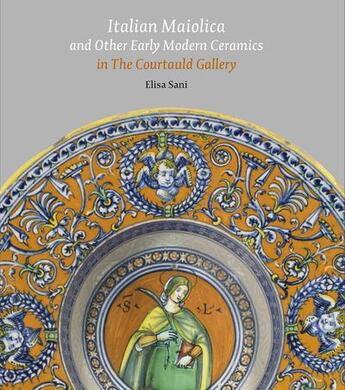Des idées de lecture pour ce début d'année !
Passionné(e) de lecture ? Inscrivez-vous
gratuitement ou connectez-vous pour rejoindre la
communauté et bénéficier de toutes les fonctionnalités du site !

This is the first catalogue of the collection of early modern ceramics in the Courtauld. The pieces in the collection showcase brilliantly the skill of potters and pottery painters working at the time of Raphael and Titian. Maiolica is one of the most revealing expressions of Renaissance art. Its extraordinary range of colours retain the vividness that they had when they left the potter's kiln. Italian potters absorbed techniques and shapes from the Islamic world and incorporated ornament and subject matter from the arts of ancient Rome. This new approach to pottery making, combined with the invention of printing, woodcut and engraving, resulted in an extraordinary type of painted pottery, praised by Vasari in his Lives of the Artists for 'surpassing the ancient with its brilliance of glaze and variety of painting'. The collection boasts a magnificent group of vessels made during the high Renaissance, the golden age of Italian maiolica. It includes precious and delicate Deruta lustreware with imagery deriving from Perugino and Raphael, as well as vessels painted in a narrative style of pottery painting known as istoriato. Highlights include vessels depicting episodes taken from the first printed Bibles of the Renaissance. Istoriato maiolica flourished particularly in the lands of the Dukes of Urbino, who promoted this craft by sending painted pottery to prestigious patrons across Europe. Emblems and devices painted on the pottery help us understand that they were meant to be used and enjoyed by the elites in Renaissance society, such as the Medici and other great Tuscan families. The catalogue will include two recent gifts to the Courtauld, a rare tile of the famous patroness of the arts Marchioness Isabella D'Este, and a refined dish painted with the story of Diana and Actaeon. All major Renaissance pottery centres are represented in the collection, including Siena, Faenza and Venice, as well as splendid examples of the mysterious pharmacy jars made at the foot of the mountain of Gran Sasso in the town of Castelli d'Abruzzo. These achievements of the art of pottery in the early modern period are completed by fine examples of Ottoman pottery, as well as examples of Valencian lustreware. Sani's introductory essay on the Victorian collector Thomas Gambier Parry will shed new light on the development of this fascinating collection, making links between Gambier Parry's artistic practice and his collecting and revealing new insights into his taste as a collector. Each detailed entry uncovers a wealth of new information on the provenance of the pieces.
Il n'y a pas encore de discussion sur ce livre
Soyez le premier à en lancer une !

Des idées de lecture pour ce début d'année !

Si certaines sont impressionnantes et effrayantes, d'autres sont drôles et rassurantes !

A gagner : la BD jeunesse adaptée du classique de Mary Shelley !

Caraïbes, 1492. "Ce sont ceux qui ont posé le pied sur ces terres qui ont amené la barbarie, la torture, la cruauté, la destruction des lieux, la mort..."